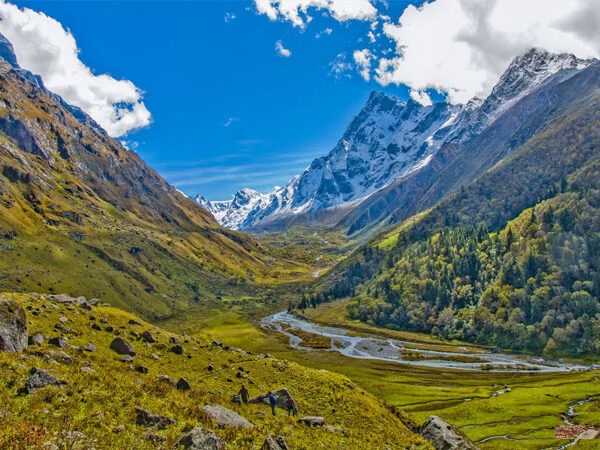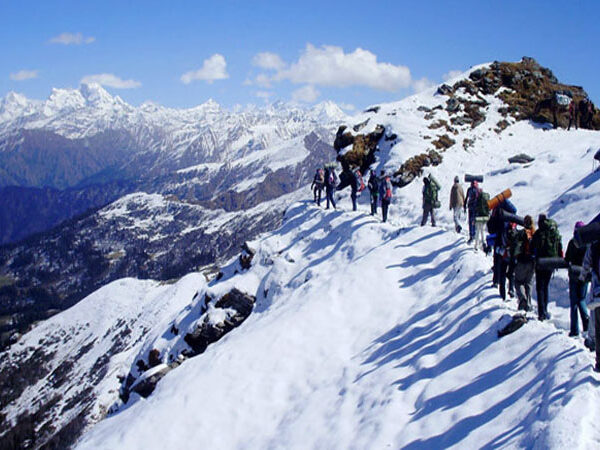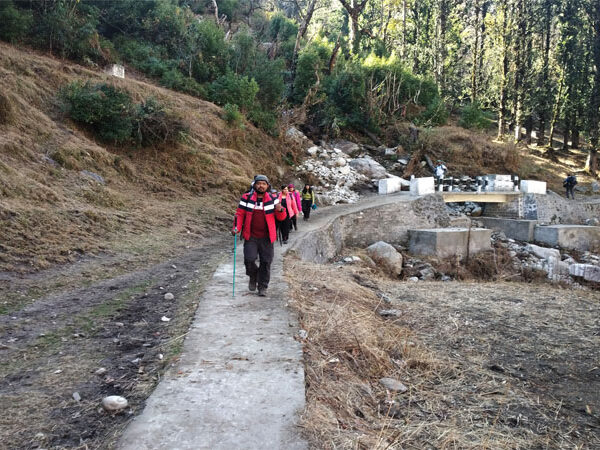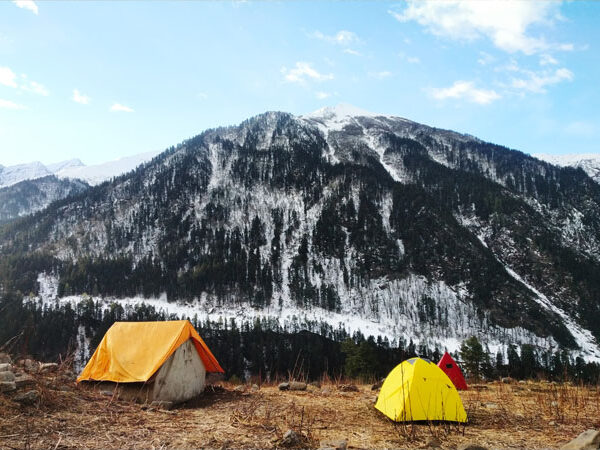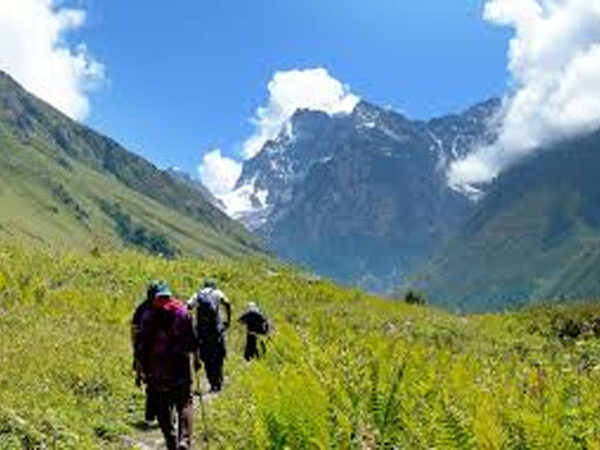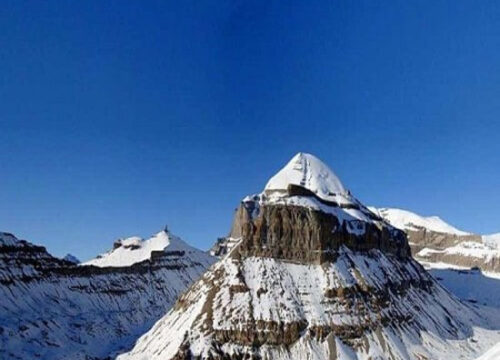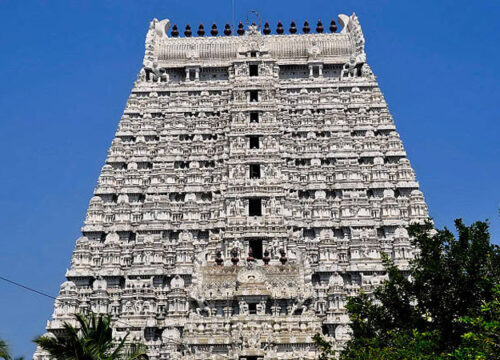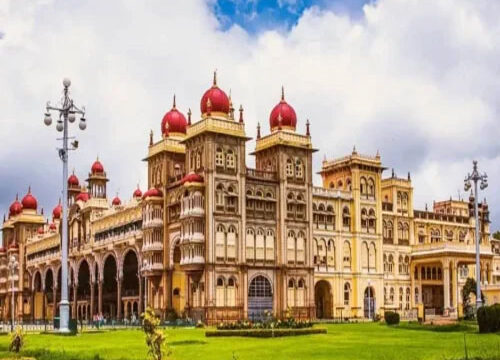Har-ki-Dun Trek from Dehardun
Duration
Tour Type
Duration: 06 nights / 07 Days
Destinations: Dehradun>Sankri> Puani Garat Trek>Boslo (3,300 m) Trek>Har ki Dun & Marinda Tal,
Har Ki Dun, also spelled Har-ki-Doon, is a beautiful valley located in the Uttarkashi district of Uttarakhand, India. It’s a part of the Garhwal Himalayas and is known for its picturesque landscapes, trekking routes, and rich cultural heritage. Here are some key points about Har Ki Dun:
Geography and Landscape
Location: Situated at an elevation of approximately 3,566 meters (11,700 feet) above sea level, the valley is part of the Govind Wildlife Sanctuary.
Scenery: Har Ki Dun is surrounded by dense forests of pine, deodar, and rhododendron. The valley offers stunning views of snow-capped peaks, alpine meadows, and glistening streams.
Popular Trek: The Har Ki Dun trek is one of the most popular treks in Uttarakhand, ideal for both beginners Trekking and Adventure
and experienced trekkers. The trek usually starts from the village of Sankri, passing through scenic villages, terraced fields, and dense forests.
Trek Duration: The trek typically takes around 6-7 days to complete, covering a distance of approximately 44 kilometers (27 miles) round trip.
Highlights: Key highlights include camping by the riverside, exploring ancient villages like Osla and Gangad, and enjoying panoramic views of peaks like Swargarohini, Bandarpoonch, and Black Peak.
Flora and Fauna
Wildlife Sanctuary: Being part of the Govind Wildlife Sanctuary, Har Ki Dun is home to diverse flora and fauna. Trekkers may spot animals like Himalayan black bears, musk deer, and a variety of bird species.
Flora: The valley is rich in plant species, including a variety of alpine flowers, medicinal plants, and dense forests.
Cultural Significance
Villages: The valley is dotted with ancient villages such as Osla and Seema, which are known for their unique wooden architecture and rich cultural heritage. The residents of these villages follow traditional lifestyles and customs.
Mythology: Har Ki Dun is steeped in mythology and folklore. It is believed to be the same route taken by the Pandavas from the Mahabharata on their way to heaven.
Best Time to Visit
Summer: The best time to visit Har Ki Dun is from April to June when the weather is pleasant, and the valley is in full bloom.
Autumn: Another good time to visit is from September to November, when the skies are clear, and the views of the snow-clad mountains are spectacular.
Winter: The valley is also accessible in winter (December to March), offering a completely different experience with snow-covered landscapes, though the trek becomes more challenging.
Accessibility
Nearest Town: The nearest town to Har Ki Dun is Sankri, which is well-connected by road to Dehradun. Dehradun is the nearest major city, with good connectivity via road, rail, and air.
Precautions
Fitness: Given the high altitude and the physical demands of the trek, good physical fitness is recommended.
Permits: Trekkers need to obtain necessary permits from the Forest Department, as the valley falls within a protected area.
Har Ki Dun offers a blend of natural beauty, adventure, and cultural richness, making it a must-visit destination for trekking enthusiasts and nature lovers.
Har Ki Dun, also spelled Har-ki-Doon, is a beautiful valley located in the Uttarkashi district of Uttarakhand, India. It’s a part of the Garhwal Himalayas and is known for its picturesque landscapes, trekking routes, and rich cultural heritage. Here are some key points about Har Ki Dun:
Geography and Landscape
Location: Situated at an elevation of approximately 3,566 meters (11,700 feet) above sea level, the valley is part of the Govind Wildlife Sanctuary.
Scenery: Har Ki Dun is surrounded by dense forests of pine, deodar, and rhododendron. The valley offers stunning views of snow-capped peaks, alpine meadows, and glistening streams.
Popular Trek: The Har Ki Dun trek is one of the most popular treks in Uttarakhand, ideal for both beginners Trekking and Adventure
and experienced trekkers. The trek usually starts from the village of Sankri, passing through scenic villages, terraced fields, and dense forests.
Trek Duration: The trek typically takes around 6-7 days to complete, covering a distance of approximately 44 kilometers (27 miles) round trip.
Highlights: Key highlights include camping by the riverside, exploring ancient villages like Osla and Gangad, and enjoying panoramic views of peaks like Swargarohini, Bandarpoonch, and Black Peak.
Flora and Fauna
Wildlife Sanctuary: Being part of the Govind Wildlife Sanctuary, Har Ki Dun is home to diverse flora and fauna. Trekkers may spot animals like Himalayan black bears, musk deer, and a variety of bird species.
Flora: The valley is rich in plant species, including a variety of alpine flowers, medicinal plants, and dense forests.
Cultural Significance
Villages: The valley is dotted with ancient villages such as Osla and Seema, which are known for their unique wooden architecture and rich cultural heritage. The residents of these villages follow traditional lifestyles and customs.
Mythology: Har Ki Dun is steeped in mythology and folklore. It is believed to be the same route taken by the Pandavas from the Mahabharata on their way to heaven.
Best Time to Visit
Summer: The best time to visit Har Ki Dun is from April to June when the weather is pleasant, and the valley is in full bloom.
Autumn: Another good time to visit is from September to November, when the skies are clear, and the views of the snow-clad mountains are spectacular.
Winter: The valley is also accessible in winter (December to March), offering a completely different experience with snow-covered landscapes, though the trek becomes more challenging.
Accessibility
Nearest Town: The nearest town to Har Ki Dun is Sankri, which is well-connected by road to Dehradun. Dehradun is the nearest major city, with good connectivity via road, rail, and air.
Precautions
Fitness: Given the high altitude and the physical demands of the trek, good physical fitness is recommended.
Permits: Trekkers need to obtain necessary permits from the Forest Department, as the valley falls within a protected area.
Har Ki Dun offers a blend of natural beauty, adventure, and cultural richness, making it a must-visit destination for trekking enthusiasts and nature lovers.
Detailed Day Wise Itinerary
From Dehradun we will drive to Sankri via Mussoorie. We will stop for lunch en route. This is an enjoyable drive initially along the Yamuna and towards the latter part along the beautiful Tons river. There are very beautiful pine forest sections along the drive today. Upon reaching Sankri we will check into the scenically located Campsite. Sankri is paradise on earth and we will take an evening stroll in this beautiful hamlet to get our muscles charged for the trek to come. Overnight stay at Sankri
After breakfast, we drive to Taluka, a quaint village boasting a few shops and two government guest houses. This marks the starting point of our trek, where we set foot on a stony path.
The air in Taluka carries the refreshing scent of cedar trees, creating an invigorating atmosphere. During the winter season or periods of heavy rainfall, the road to Taluka may become impassable due to streams running across it, necessitating an 8 km walk to reach the village.
Our journey takes us along the banks of the spirited Supin River, shaded by walnut, pine, and cedar trees, making for a delightful walk. In autumn, we often stumble upon scattered walnuts on the ground. It's crucial to be wary of "bichchu ghas," or scorpion grass, as even a slight touch can result in a stinging sensation lasting for about half an hour. This herb, interestingly, is also used in local cuisine.
Passing villagers frequently exchange greetings as we trek further. As we ascend on the true left, the village of Datmer comes into view, characterized by a series of terraced farms where vibrant red Cholai flourishes during the late monsoon to early autumn.
Our path meanders over several streams that eventually merge with the Supin River. After a few hours of trekking, we spot the village of Gangad across the river on our left. In the forested areas of this region, you may even encounter a yellow-throated marten. Edible seabuckthorn fruits, with their orange hue, often hang in clusters from the trees. Known as 'leh berries,' these juicy and tangy fruits are a rich source of Vitamin C.
Continuing our trek, we finally reach the secluded campsite nestled at Puani Garat, where we can rest and rejuvenate after our eventful journey.
Our day begins with a trek to Osla village, perched about a hundred meters above the Supin River on a sloping spur. The initial path to Osla is the steepest part of the entire journey, taking around 30-40 minutes to conquer. Osla's surroundings are adorned with terraced farms, each season painting them in a different hue. During late monsoon, the red Cholai (Amaranth) farms create a mesmerizing sight.
Cholai is a nutritional powerhouse and a local favorite, alongside a variety of kidney beans grown in the area. Osla stands as the last village on the path to Har ki Dun. Beyond Osla, the trail gradually ascends, crossing fields with the river visible far below. Along the way, we encounter a temple to the right, and we pass through fields of vibrant flowers like orchids, fleece flowers, and sunflowers.
This leg of the journey is relatively short, allowing us to acclimatize to the high altitude and prepare for the upcoming days. We can take a break and soak in the sun at the picturesque Kalkatidhar campsite. The restriction on camping at Har Ki Dun has positively impacted the trek, offering greater comfort while preserving the natural beauty of the area.
The day’s trek can be considered to be rather long as we today visit Har Ki Dun and Marinda Tal, a small lake formation due to the obstructing boulder across the river stream, which lies 2 KM further ahead of Har Ki Dun. As we start the trek, at a short distance a hidden and roaring waterfall is encountered with a small tea shop beside the waterfall.
The ascending path offers stunning views above the confluence of the Supin and Ruinsara rivers. From here, you can admire the snow-clad peaks of Ruinsara Valley, notably Black Peak, the highest in the area. To the north, the Har Ki Dun valley unfolds in the distance, with a clear view of the Forest hut. Continuing higher on the right of the river, you enter a final stretch through a beautiful forest. Emerging from the woods, you arrive at Har Ki Dun’s main camping area, nestled beside a babbling stream. This panoramic spot sits at the junction of two valleys, one originating from Jaundhar Glacier and the other beyond Hata Glacier, offering a breathtaking natural spectacle.
Higher up towards the North we can spot the Forest Rest House, while the wood crafted GMVN guest house lies further up in the distance. The Har ki Dun peak stands tall right in front of us behind the Forest Rest House. Towards its left, Hata peak which is usually snow-covered can be seen. The minor ridge to our right, lined with a few scattered Himalayan birch trees Bhojpatra separates us from the massive Har Ki Dun valley that goes up all the way to the base of Swargarohini Peak. The paper-like bark of these trees was used in ancient times to write religious scriptures.
The vast open meadows following the course of the Supin River can be explored. Further ahead of the meadows one can walk among the forests of Bhojpatra trees (Himalayan birch) or get a closer glimpse of the Jaundhar glacier and Swargarohini peak, for which we will have to head upwards the Har Ki Dun valley, towards the Swargaroini peak in the eastern direction.
We can choose to relax and soak in the environment for some time or we can continue our trek to Marinda Tal, in the north, just 2-3 km away from Har ki Dun. The trail is gradually ascending here. It is a small lake formed by a huge boulder obstructing the river which flows down from the base of the Borasu Pass.
After our short visit to Marinda Tal we make our return journey back to Kalkatidhar. We take the same route and it becomes much easier as its all downhill from here. We reach back by early evening and rest at the campsite.
The return trip to Osla offers a leisurely stroll. Along the way, we enjoy a panoramic view of the trail leading back to Osla, with the valley gradually descending towards Taluka. This descent occurs around the bend of the ridge where the two streams, flowing from Har Ki Dun and Ruinsara, merge. A short distance before this confluence, we catch sight of a trail to our left, indicated by a bridge crossing over the stream.
This trail connects with the path to Ruinsara Lake but is seldom chosen by trekkers. Upon reaching Osla, there's the opportunity to explore the village, engage in conversations with the locals, and immerse oneself in the Garhwali culture. Continuing our journey, we return to our previous campsite at Puani Garat, where we can relax and soak in the warmth of the sun.
In the early morning, after having breakfast, we depart from our lovely accommodation and begin our trek along the same path we traversed on Day 1, heading towards Taluka. Even though we're retracing our steps, the views appear different as the perspective shifts significantly when trekking downhill. The descent requires less time than the initial ascent and proves to be quite enjoyable. We follow the left bank of the Supin River until we eventually reach Taluka. From there, a vehicle awaits to transport us back to Sankri.
The Har ki Dun trek ends today, departing from Sankri. The drive through lesser-explored areas to Mori remains stunning. After passing various towns and Kempty-Mussoorie, we reach Dehradun in the late afternoon or early evening.
Included/Exclude
- Transport service from Dehradun to Dehradun in a Tempo Traveler
- Accommodation for 6 Nights on triple sharing: 2 Nights in a Hotel & 4 Nights Camping. (Additional cost of Rs. 2800 for double and Rs. 5500 for single occupancy)
- Meals from Day 1 Dinner to Day 7 Breakfast will be served. Veg Meals with Egg options can be served. Jain meals can be arranged on request.
- Certified Trek Leader, Cook and Support Staff
- Camping Equipment including tents, kitchen & dining tents, toilet tents etc
- Gaiters, Microspikes, when needed
- Forest Permits
- Medical Kit
- Personal Luggage Offload charges. This can be arranged at Rs. 1800 per bag of 10 kg maximum
- Any meals/services not mentioned above
- Any charges for video cameras, still cameras, etc.
- Bottled water, alcohol, soft drinks, beverages, etc.
- Personal expenses like tips, telephone calls, laundry, etc.
- Any costs arising out of unforeseen circumstances like landslides, road blocks, bad weather, etc.
- Insurance
- GST 5%
Essential Items:
- Trekking shoes: You would need a good quality of trekking shoe with ankle support. Sport shoes won’t be comfortable
- Backpack (40-60 litres): A backpack with sturdy straps and a supporting frame. Rain cover for backpack is essential.
- Daypack (20 litres): You will need a smaller backpack to carry water, medical kit and some light snacks for your trek
IMPORTANT : Please make sure you take a poncho/raincoat as the weather is unpredictable on mountains
Clothes
- Warm Layers/Fleeces: You will be trekking and staying at high altitudes. So make sure you have the apt clothes for the climatic conditions. It will be cold at the higher altitudes so make sure you have at least three layers of warm clothes to protect yourself.
- Trek pants: Wear one pair and carry the other. Denim/jeans and shorts are not suitable for trekking.
- Three collared t-shirts: Carry light, full sleeved t-shirts that prevent sun burns on the neck and arms. Again, wear one and carry one. Let one of these be a dri-fit t-shirt. It will dry quickly in case you are trekking on a rainy day.
- Thermals (Optional): Those who are more susceptible to cold can carry thermals to wear at night.
Accessories
- Sunglasses
- Suncap: The sun is more harsh at high altitudes so wear a suncap to protect your face and neck.
- Synthetic hand gloves: Optional
- Woolen cap (optional)
- Socks (2 pairs): Apart from two sports socks, you can take a pair of woollen socks for the night.
- Headlamp/LED torch
- Trekking pole
Others
- Toiletries: Sunscreen, moisturizer, light towel, lip balm, toilet paper, toothbrush, toothpaste, hand sanitizer. Do not carry wet wipes since these are not biodegradable.
Carry a zip lock bag to put used wet tissues and napkins.
Two water bottles: 1 litre each
- Plastic covers: While packing, use plastic bags to compartmentalize things and carry few extra plastic bags for wet clothes.
- Any specific medicine

